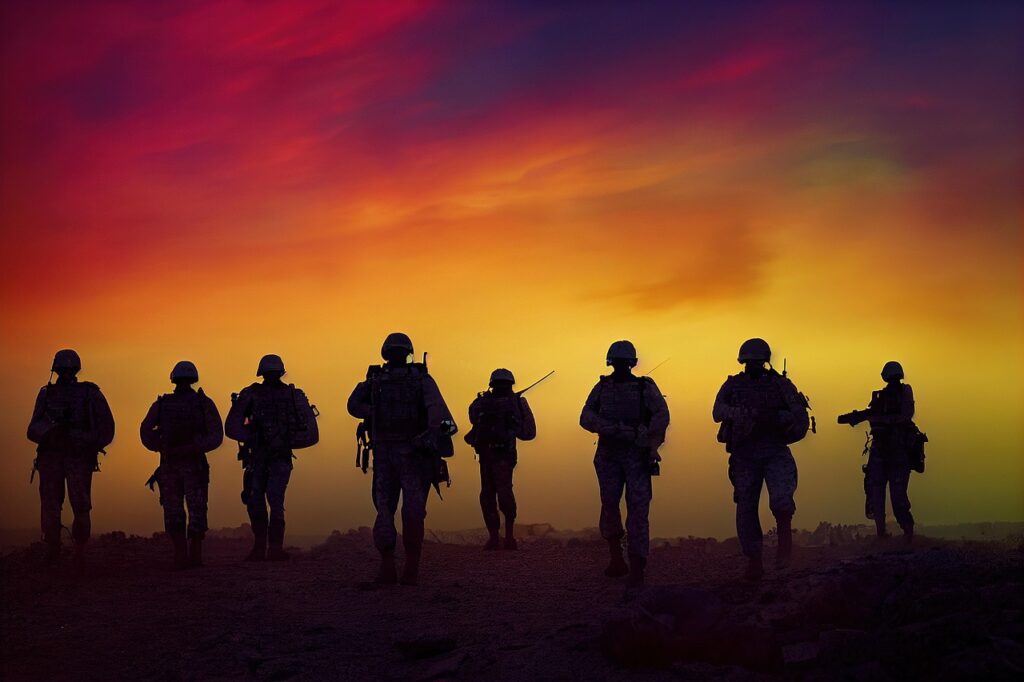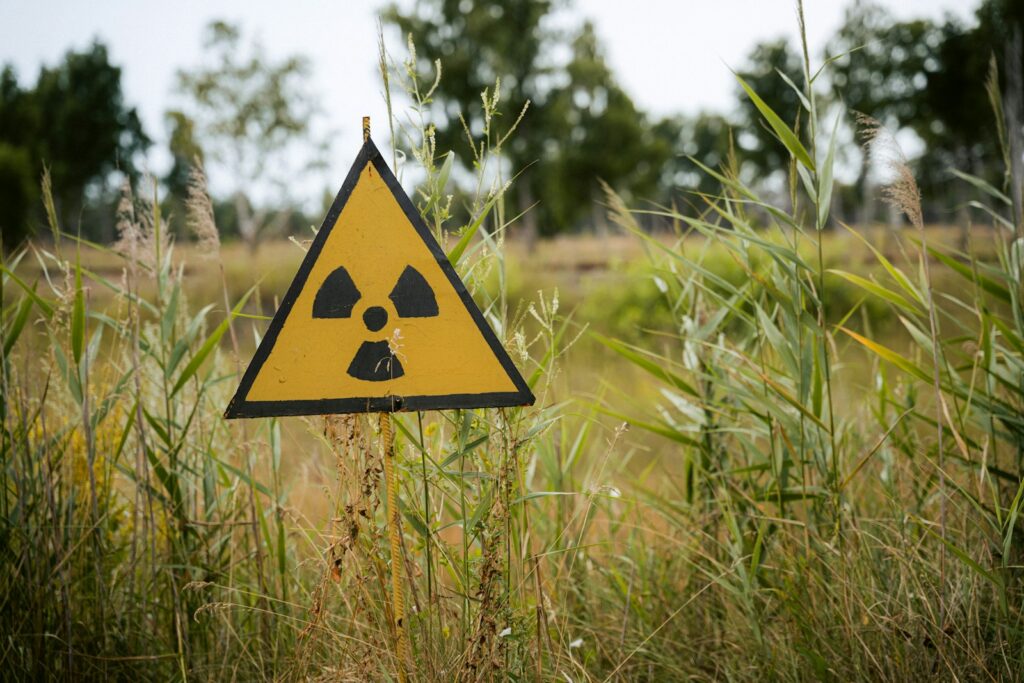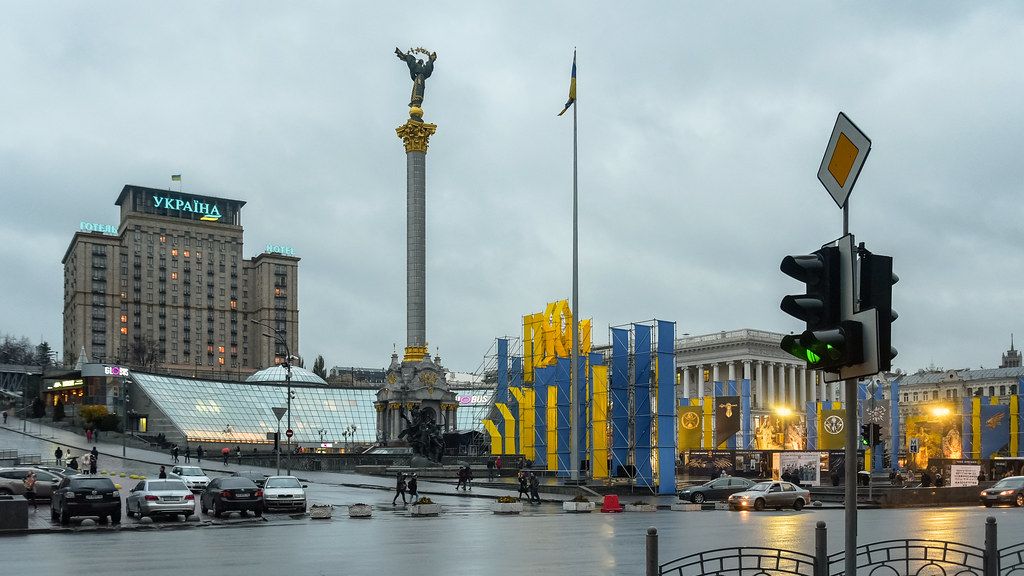
World War II, the 20th century’s seminal event, continues to fascinate and educate us decades after its conclusion. It was a conflict of unprecedented scale, directly and indirectly touching more people than any before or since, and its profound impact still shapes the world we inhabit today. Yet, despite meticulous research and countless historical accounts, a surprising number of myths and glaring untruths about this global struggle persist, often fueled by propaganda, national pride, or simply a wish to believe a particular version of events.
These misconceptions are not merely academic curiosities; they often misrepresent why and when the war started, how and where it progressed, and why and when it ultimately ended. They can even conceal the greatest devastations committed by the war’s ‘villains’ and the greatest triumphs achieved by its ‘heroes.’ Debunking these long-held beliefs is crucial for a more accurate and nuanced understanding of history, allowing us to appreciate the complexities and the true human cost of this pivotal period.
From the widely accepted narrative that often simplifies the conflict into a series of short phrases – ‘Hitler rises, France falls, the Holocaust begins, Pearl Harbor burns, D-Day commences, the bomb drops’ – we find that even in its most fully fleshed-out form, this story needs a deeper look. Did you know, for instance, that 400,000 Axis soldiers made it onto American shores, or that the true body count of the Holocaust is about twice as big as commonly believed? Join us as we journey through some of the most persistent World War II myths that historians have worked tirelessly to correct, revealing the war as it actually happened, not just the narrative propagated by its most powerful victors.
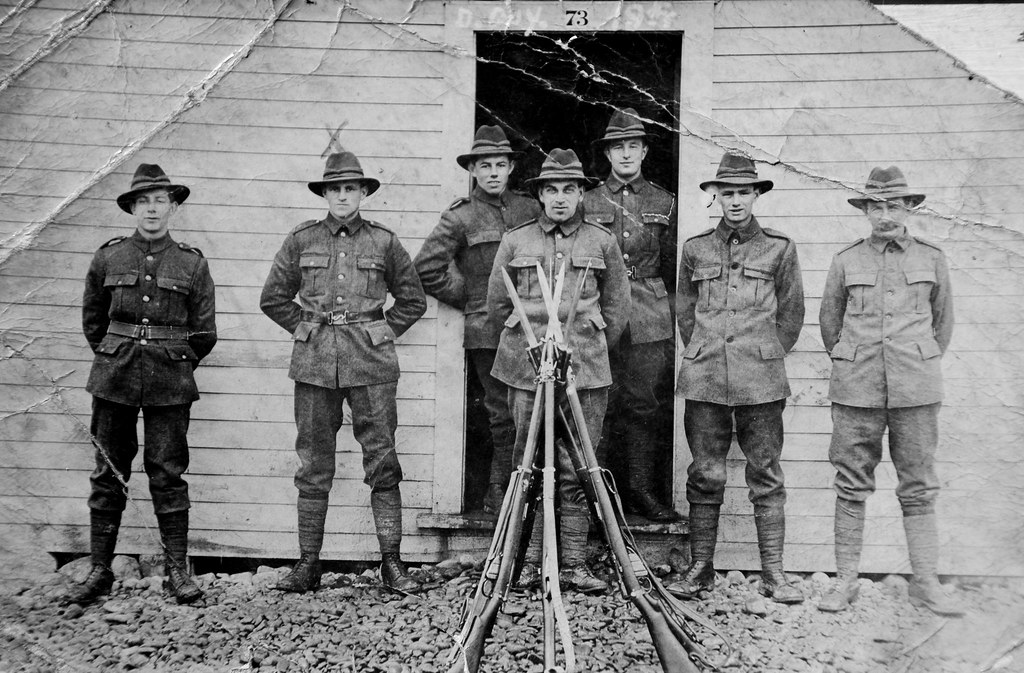
1. **Myth: American forces were filled with eager volunteers.**One of the most enduring images of World War II in the United States is that of countless young American men eagerly volunteering to fight, driven by a clear understanding that it was the right thing to do. This narrative often casts World War II as ‘the good war,’ implying a universal sense of patriotic duty that propelled individuals into uniform without question or compulsion. It’s a powerful and romanticized notion that speaks to a nation united in a noble cause, but the historical facts tell a more complex story.
However, the reality is quite different from this pervasive myth. During World War II, a significant two-thirds of U.S. forces were actually drafted, not enlisted. This contrasts sharply with the Vietnam War, often labeled as the “ugly, evil twin” to World War II’s ‘good war,’ where two-thirds of U.S. forces were enlisted rather than drafted. This statistical reversal challenges the simplistic idea that American participation in World War II was predominantly voluntary and driven solely by an innate moral conviction.
The widespread use of conscription highlights the immense national effort required to mobilize for such a massive global conflict. While patriotism certainly played a role, the draft ensured that the ranks were filled to meet the unprecedented demands of a two-front war. Iconic images of American soldiers, injured while storming Omaha Beach on D-Day, awaiting medical treatment, represent the profound sacrifices made, many of which were undertaken by men called to serve rather than those who spontaneously volunteered.
Military equipment: Spanish–American War
Conflict: American English
Partof: decolonization of the Americas
Caption: Signal Corps (United States Army),New York Harbor,pith helmet,Treaty of Paris (1898),Theodore Roosevelt,Flag of Spain
Date: Thu Apr 21 1898 00:00:00 GMT-0800 (Pacific Daylight Time)
Place: Cuba,Guam
Casus: Cuban War of Independence,Sinking of USS Maine,De Lôme Letter,Philippine Revolution
Result: U.S. victory
Territory: Spain relinquishes sovereignty over Cuba; cedes Puerto Rico, Guam, and the Philippines to the United States. $20 million paid to Spain by the United States for infrastructure owned by Spain.
Combatant1: [object Object],Cuban Liberation Army,flagdeco,Philippine Revolutionary Army
Combatant2: flagcountry
Commander1: William McKinley,Russell A. Alger,John Davis Long,Nelson A. Miles,Theodore Roosevelt,William Shafter,Fitzhugh Lee,George Dewey,William T. Sampson,Wesley Merritt,Joseph Wheeler,Charles Sigsbee,Máximo Gómez,Calixto García,Demetrio Castillo Duany,Emilio Aguinaldo,Apolinario Mabini,flagdeco,flagdeco,flagicon image,flagicon image,Patricio Montojo,Pascual Cervera,Arsenio Linares,Manuel de la Cámara,Manuel Macías y Casado,Ramón Blanco, 1st Marquess of Peña Plata,Antero Rubín,Arsenio Martínez Campos,Valeriano Weyler,José Toral y Velázquez,Basilio Augustín,Fermín Jáudenes,flagicon image,[object Object],[object Object],[object Object],278,447 in Cuba (only 2,820 engaged in major land battles),[object Object],2,446 dead,369 soldiers killed,10 sailors killed,6 Marines killed,2,061 dead from disease,1,662 wounded,11 captured,1 cargo ship sunk,1 cruiser damaged
| casualties2 = Total: 56,400–56,600,Spanish:,15,700–15,800 dead,200 soldiers killed,500–600 sailors killed,15,000 dead from disease,700–800 wounded,40,000+ captured,6 small ships sunk,11 cruisers sunk,2 destroyers sunk
| campaignbox = {{Campaignbox Spanish American War Theaters
Categories: 1890s in the Spanish Empire, 1890s in the United States, 1898 in Cuba, 1898 in Guam, 1898 in Puerto Rico
Summary: The Spanish–American War (April 21 – August 13, 1898) was fought between Spain and the United States in 1898. It began with the sinking of the USS Maine in Havana Harbor in Cuba, and resulted in the U.S. acquiring sovereignty over Puerto Rico, Guam, and the Philippines, and establishing a protectorate over Cuba. It represented U.S. intervention in the Cuban War of Independence and Philippine Revolution, with the latter later leading to the Philippine–American War. The Spanish–American War brought an end to almost four centuries of Spanish presence in the Americas, Asia, and the Pacific; the United States meanwhile not only became a major world power, but also gained several island possessions spanning the globe, which provoked rancorous debate over the wisdom of expansionism.
The 19th century represented a clear decline for the Spanish Empire, while the United States went from a newly founded country to a rising power. In 1895, Cuban nationalists began a revolt against Spanish rule, which was brutally suppressed by the colonial authorities. W. Joseph Campbell argues that yellow journalism in the U.S. exaggerated the atrocities in Cuba to sell more newspapers and magazines, which swayed American public opinion in support of the rebels. But historian Andrea Pitzer also points to the actual shift toward savagery of the Spanish military leadership, who adopted the brutal reconcentration policy after replacing the relatively conservative Governor-General of Cuba Arsenio Martínez Campos with the more unscrupulous and aggressive Valeriano Weyler, nicknamed “The Butcher.” President Grover Cleveland resisted mounting demands for U.S. intervention, as did his successor William McKinley. Though not seeking a war, McKinley made preparations in readiness for one.
In January 1898, the U.S. Navy armored cruiser USS Maine was sent to Havana to provide protection for U.S. citizens. After the Maine was sunk by a mysterious explosion in the harbor on February 15, 1898, political pressures pushed McKinley to receive congressional authority to use military force. On April 21, the U.S. began a blockade of Cuba, and soon after Spain and the U.S. declared war. The war was fought in both the Caribbean and the Pacific, where American war advocates correctly anticipated that U.S. naval power would prove decisive. On May 1, a squadron of U.S. warships destroyed the Spanish fleet at Manila Bay in the Philippines and captured the harbor. The first U.S. Marines landed in Cuba on June 10 in the island’s southeast, moving west and engaging in the Battles of El Caney and San Juan Hill on July 1 and then destroying the fleet at and capturing Santiago de Cuba on July 17. On June 20, the island of Guam surrendered without resistance, and on July 25, U.S. troops landed on Puerto Rico, of which a blockade had begun on May 8 and where fighting continued until an armistice was signed on August 13.
The war formally ended with the 1898 Treaty of Paris, signed on December 10 with terms favorable to the U.S. The treaty ceded ownership of Puerto Rico, Guam, and the Philippines to the U.S., and set Cuba up to become an independent state in 1902, although in practice it became a U.S. protectorate. The cession of the Philippines involved payment of $20 million ($760 million today) to Spain by the U.S. to cover infrastructure owned by Spain. In Spain, the defeat in the war was a profound shock to the national psyche and provoked a thorough philosophical and artistic reevaluation of Spanish society known as the Generation of ’98.
Get more information about: Spanish–American War
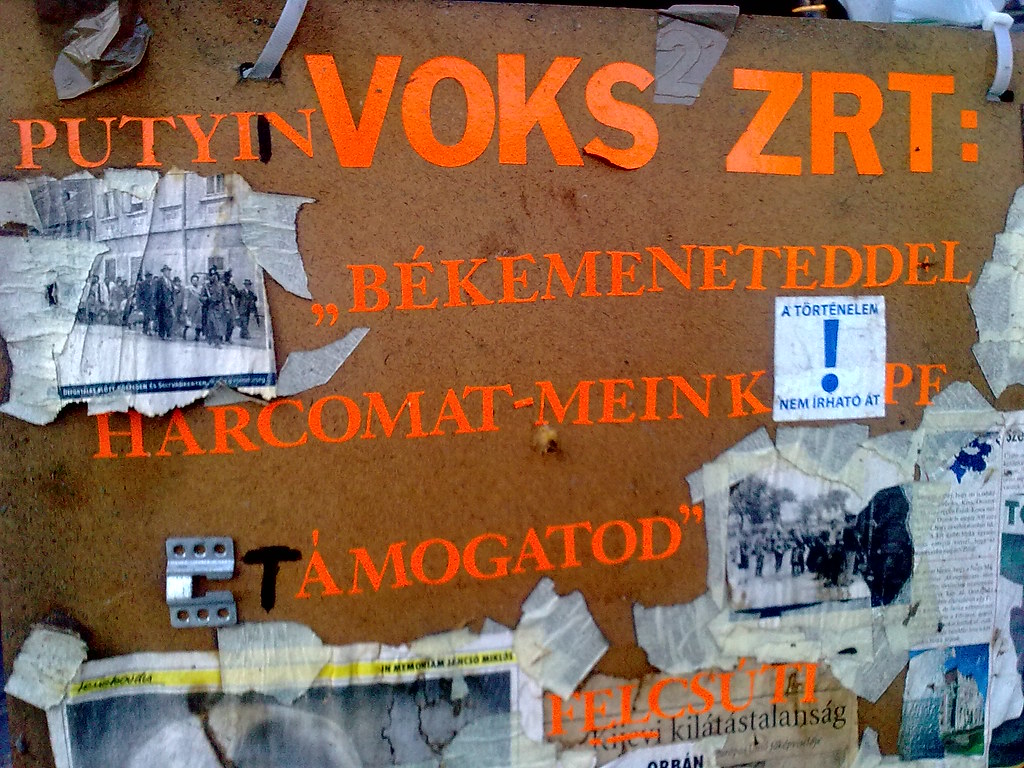
2. **Myth: The Holocaust’s total death toll was 6 million Jews.**The atrocity of the Holocaust remains one of history’s darkest chapters, and it is unequivocally clear that approximately 6 million Jews perished at the hands of the Nazis. This number is etched into global consciousness as a stark reminder of systematic genocide and unparalleled human cruelty. The sheer scale of this loss is almost unfathomable, and its memory is rightly preserved and honored across the world.
However, that oft-quoted number, while horrific in its own right, does not represent the entirety of the Holocaust’s total death toll. The full scope of Nazi extermination efforts extended far beyond the Jewish population. In addition to the 6 million Jews, the Nazis systematically used their death camps to exterminate a further 5 million civilians. These victims came from many diverse groups targeted for political, racial, or social reasons by the Nazi regime.
These additional 5 million included communists, Roma, Serbs, Polish intelligentsia, homouals, the disabled, and many others deemed ‘undesirable’ or ‘enemies of the state’ by the Third Reich. Understanding this broader context of victims is crucial for a complete and accurate understanding of the Holocaust’s immense human cost and the vast, indiscriminate nature of Nazi terror. Pictured, a pile of human bones and skulls sits at the Nazi concentration camp of Majdanek in the outskirts of Lublin, Poland, following its liberation in 1944, a haunting testament to the myriad lives lost.
Military equipment: The Holocaust
Title: The Holocaust
Partof: World War II
Alt: Large number of people standing beside a railway siding with the camp gate in the background
Type: Genocide,ethnic cleansing,mass murder,mass shooting,death marches,poison gas,hate crime
Caption: Auschwitz concentration camp#Auschwitz II-Birkenau
Location: Occupation of Poland (1939–1945)
Date: 1941–1945
Fatalities: Around 6 million Jews
Perps: Nazi Germany
Categories: 1940s in Europe, All Wikipedia articles written in American English, All articles with failed verification, Antisemitic attacks and incidents, Articles containing Ancient Greek (to 1453)-language text
Summary: The Holocaust ( HOL-ə-kawst), known in Hebrew as the Shoah ( SHOH-ə; Hebrew: שּׁוֹאָה, romanized: Shoah, IPA: [ʃoˈʔa], lit. ’Catastrophe’), was the genocide of European Jews during World War II. From 1941 to 1945, Nazi Germany and its collaborators systematically murdered some six million Jews across German-occupied Europe, around two-thirds of Europe’s Jewish population. The murders were committed primarily through mass shootings across Eastern Europe and poison gas chambers in extermination camps, chiefly Auschwitz-Birkenau, Treblinka, Belzec, Sobibor, and Chełmno in occupied Poland. Separate Nazi persecutions killed millions of other non-Jewish civilians and prisoners of war (POWs); the term Holocaust is sometimes used to include the murder and persecution of non-Jewish groups.
The Nazis developed their ideology based on racism and pursuit of “living space”, and seized power in early 1933. Meant to force all German Jews to emigrate, regardless of means, the regime passed anti-Jewish laws, encouraged harassment, and orchestrated a nationwide pogrom known as Kristallnacht in November 1938. After Germany’s invasion of Poland in September 1939, occupation authorities began to establish ghettos to segregate Jews. Following the June 1941 invasion of the Soviet Union, 1.5 to 2 million Jews were shot by German forces and local collaborators. By early 1942, the Nazis decided to murder all Jews in Europe. Victims were deported to extermination camps where those who had survived the trip were killed with poisonous gas, while others were sent to forced labor camps where many died from starvation, abuse, exhaustion, or being used as test subjects in experiments. Property belonging to murdered Jews was redistributed to the German occupiers and other non-Jews. Although the majority of Holocaust victims died in 1942, the killing continued until the end of the war in 1945.
Many Jewish survivors emigrated from Europe after the war. A few Holocaust perpetrators faced criminal trials. Billions of dollars in reparations have been paid, although falling short of the Jews’ losses. The Holocaust has also been commemorated in museums, memorials, and culture. It has become central to Western historical consciousness as a symbol of the ultimate human evil.
Get more information about: The Holocaust
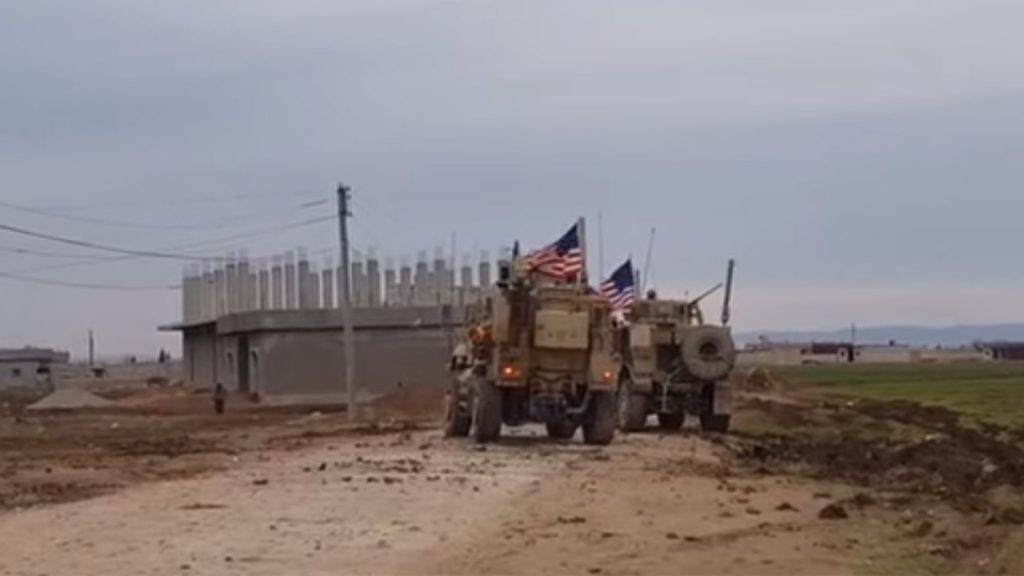
3. **Myth: The largest civilian death tolls were among European Jewish populations.**While the staggering figure of 6 million Jews killed in Europe during the Holocaust represents an unparalleled act of calculated genocide and ruthlessness, a comprehensive global perspective on civilian casualties reveals an even broader, and often overlooked, scale of suffering during World War II. The intensity and despicable intent behind the extermination of Jewish populations were unique, but other civilian groups also endured catastrophic losses that rival or even exceed this immense figure.
Current estimates dramatically expand our understanding of the war’s civilian toll. For instance, the civilian death toll for the Soviet Union reached an approximate 13 million. This immense loss was a direct result of the brutal Eastern Front, where German forces implemented a war of annihilation, coupled with widespread famine and disease. The Soviet Union bore an unimaginable burden, sacrificing millions of its people in the struggle against the Nazi invasion.
Even more tragically, the civilian death toll for the Chinese, primarily at the hands of the Japanese during the Second Sino-Japanese War, is estimated to have been about 14 million. This figure, often overshadowed by events in Europe, underscores the brutal and prolonged nature of the conflict in Asia. The Nanjing Massacre, perpetrated by the Japanese in late 1937 and early 1938, where Chinese corpses lay along the banks of the Qinhuai River, serves as a grim reminder of the horrific violence inflicted upon Chinese civilians. These numbers highlight that the suffering endured by civilian populations was truly global, extending far beyond the borders of Europe.
Military equipment: The Holocaust
Title: The Holocaust
Partof: World War II
Alt: Large number of people standing beside a railway siding with the camp gate in the background
Type: Genocide,ethnic cleansing,mass murder,mass shooting,death marches,poison gas,hate crime
Caption: Auschwitz concentration camp#Auschwitz II-Birkenau
Location: Occupation of Poland (1939–1945)
Date: 1941–1945
Fatalities: Around 6 million Jews
Perps: Nazi Germany
Categories: 1940s in Europe, All Wikipedia articles written in American English, All articles with failed verification, Antisemitic attacks and incidents, Articles containing Ancient Greek (to 1453)-language text
Summary: The Holocaust ( HOL-ə-kawst), known in Hebrew as the Shoah ( SHOH-ə; Hebrew: שּׁוֹאָה, romanized: Shoah, IPA: [ʃoˈʔa], lit. ’Catastrophe’), was the genocide of European Jews during World War II. From 1941 to 1945, Nazi Germany and its collaborators systematically murdered some six million Jews across German-occupied Europe, around two-thirds of Europe’s Jewish population. The murders were committed primarily through mass shootings across Eastern Europe and poison gas chambers in extermination camps, chiefly Auschwitz-Birkenau, Treblinka, Belzec, Sobibor, and Chełmno in occupied Poland. Separate Nazi persecutions killed millions of other non-Jewish civilians and prisoners of war (POWs); the term Holocaust is sometimes used to include the murder and persecution of non-Jewish groups.
The Nazis developed their ideology based on racism and pursuit of “living space”, and seized power in early 1933. Meant to force all German Jews to emigrate, regardless of means, the regime passed anti-Jewish laws, encouraged harassment, and orchestrated a nationwide pogrom known as Kristallnacht in November 1938. After Germany’s invasion of Poland in September 1939, occupation authorities began to establish ghettos to segregate Jews. Following the June 1941 invasion of the Soviet Union, 1.5 to 2 million Jews were shot by German forces and local collaborators. By early 1942, the Nazis decided to murder all Jews in Europe. Victims were deported to extermination camps where those who had survived the trip were killed with poisonous gas, while others were sent to forced labor camps where many died from starvation, abuse, exhaustion, or being used as test subjects in experiments. Property belonging to murdered Jews was redistributed to the German occupiers and other non-Jews. Although the majority of Holocaust victims died in 1942, the killing continued until the end of the war in 1945.
Many Jewish survivors emigrated from Europe after the war. A few Holocaust perpetrators faced criminal trials. Billions of dollars in reparations have been paid, although falling short of the Jews’ losses. The Holocaust has also been commemorated in museums, memorials, and culture. It has become central to Western historical consciousness as a symbol of the ultimate human evil.
Get more information about: The Holocaust
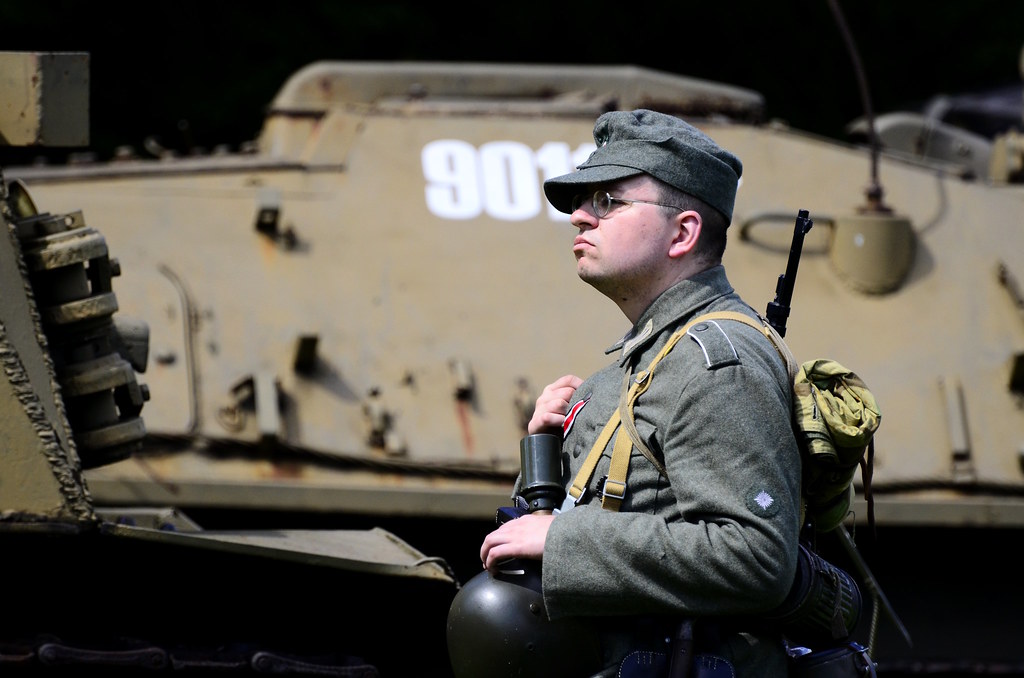
4. **Myth: Axis soldiers never set foot on American soil.**Many people harbor the firm belief that during World War II, the United States remained an unviolated sanctuary, with no enemy combatants ever setting foot on American soil. This notion often contributes to a sense of national invulnerability and a narrative of the war being fought ‘over there,’ far from the homeland. It’s an understandable misconception, fostering a sense of security that the vast oceans provided an impenetrable barrier against direct enemy presence.
However, this widespread belief is quite contrary to the historical record. Few seem to realize that a substantial number of Axis soldiers, specifically 400,000, actually landed in the U.S. between 1942 and 1945. The crucial distinction, thankfully for the Americans, is that these 400,000 individuals were not invading forces, but rather prisoners of war. Their presence on American soil was a testament to Allied victories abroad, not a failure of homeland defense.
These hundreds of thousands of prisoners were housed in dozens of American prison camps scattered across the country. The European Allies, particularly the British, simply did not have the capacity or the space to accommodate such a massive influx of captured enemy personnel. By all accounts, the conditions in these American camps were remarkably good. Prisoners were paid for their labor and provided with amenities such as theater performances, games, and books. One prisoner later described it as a “golden cage,” illustrating the stark contrast between their captivity and the brutal realities of the war. Pictured, German POWs board a train, bound for prison, in Boston, marking their arrival as captives rather than conquerors.
Military equipment: World War II by country
Categories: All articles lacking reliable references, All articles needing additional references, All articles with dead external links, All articles with unsourced statements, Articles containing Ukrainian-language text
Summary: Almost every country in the world participated in World War II. Most were neutral at the beginning, but relatively few nations remained neutral to the end. World War II pitted two alliances against each other, the Allies and the Axis powers. It is estimated that 74 million people died, with estimates ranging from 40 million to 90 million dead (including all genocide casualties). The main Axis powers were Nazi Germany, the Empire of Japan, and the Kingdom of Italy; while the United Kingdom, the United States, the Soviet Union and China were the “Big Four” Allied powers.
The countries involved in or affected by World War II are listed alphabetically, with a description of their role in the conflict.
Get more information about: World War II by country
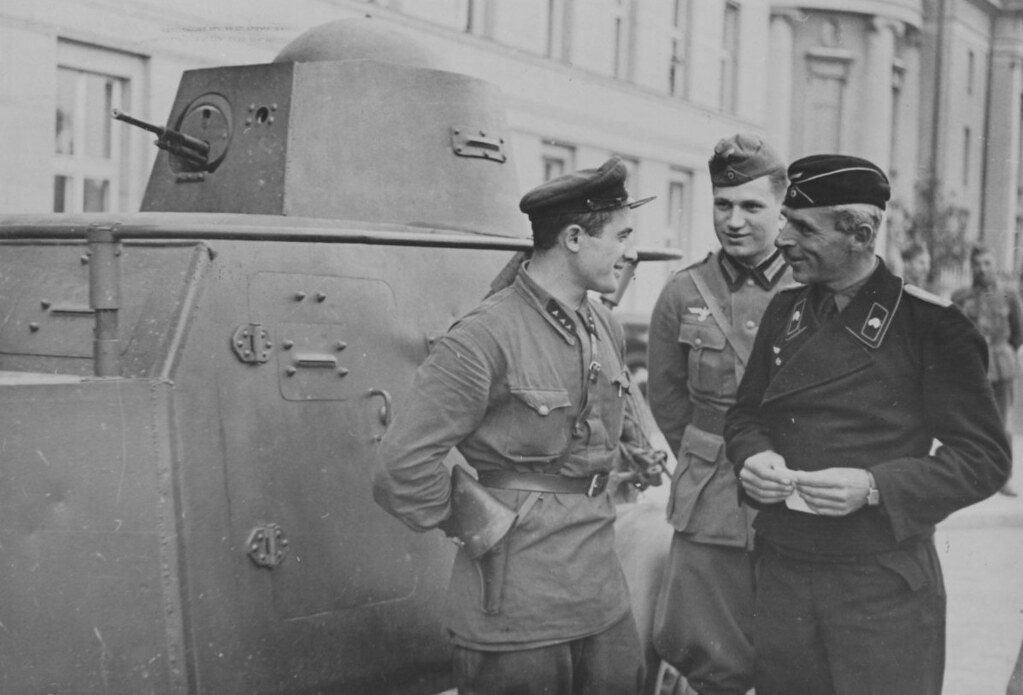
5. **Myth: The Nazis were the only ones that committed war crimes.**In the aftermath of World War II, the narrative of absolute good versus absolute evil often took hold, with the Nazis and their Axis partners squarely cast as the perpetrators of all atrocities. The horrifying war crimes committed by the Japanese, including Unit 731’s medical experiments on 250,000 civilians, the execution of 100,000 in Manila, and the torture and killing of thousands of American POWs, are well-documented. Yet, a comfortable but inaccurate belief often prevails that only the ‘villains’ of the war were responsible for such morally reprehensible acts.
However, a deeper look into the historical record reveals a far more uncomfortable truth: the Allies, too, committed their share of hideous crimes. This is not to equate their actions with the systematic, state-sponsored genocide of the Holocaust or the sheer scale of some Axis atrocities, but it is to acknowledge that the fog of war and the brutalization of combat led to morally indefensible acts on all sides. For instance, a recent study suggests that American soldiers raped approximately 14,000 women in England, France, and Germany, as well as 10,000 in Okinawa.
Furthermore, the grim fact that 60 percent of Japanese corpses in the Mariana Islands were missing their skulls strongly indicates that U.S. soldiers were collecting them as war trophies – a deeply disturbing practice that reflects a severe dehumanization of the enemy. The list of such incidents goes on, serving as a stark reminder that even in a war against undeniable evil, the ‘good guys’ were not always spotless. Pictured, Japanese naval forces wearing gas masks prepare to advance during the battle of Shanghai in August 1937, a conflict where the Japanese themselves illegally used chemical and bacteriological weapons, including fleas carrying the bubonic plague, highlighting the dark spectrum of war crimes committed across the globe.
Military equipment: Myth of the clean Wehrmacht
Upright: General of the Army (United States),Dwight D. Eisenhower
Categories: 1940s introductions, All Wikipedia articles written in British English, Articles containing German-language text, Articles with short description, CS1 German-language sources (de)
Summary: The myth of the clean Wehrmacht (German: Mythos der sauberen Wehrmacht) is the negationist notion that the regular German armed forces (the Wehrmacht) were not involved in the Holocaust or other war crimes during World War II. The myth, heavily promoted by West German authors and military personnel after World War II, completely denies the culpability of the German military command in the planning and perpetration of war crimes. Even where the perpetration of war crimes and the waging of an extermination campaign, particularly in the Soviet Union – the populace of which was viewed by the Nazis as “sub-humans” ruled by “Jewish Bolshevik” conspirators – has been acknowledged, they are ascribed to the “Party soldiers corps”, the Schutzstaffel (SS), but not the regular German military.
The myth began during the war, being promoted in the Wehrmacht’s official propaganda and by soldiers of all ranks seeking to portray their institution in the best possible light; as prospects for victory faded, these soldiers began to portray themselves as victims. After Germany’s defeat, the verdict of the International Military Tribunal (1945–1946), which released many of the accused, was misrepresented as exonerating the Wehrmacht. Franz Halder and other Wehrmacht leaders signed the Generals’ memorandum entitled “The German Army from 1920 to 1945”, which laid out the key elements of the myth, attempting to exculpate the Wehrmacht from war crimes.
The victorious Western Allies were becoming increasingly concerned with the growing Cold War against their former ally, the Soviet Union, and wanted West Germany to begin rearming to counter the perceived Soviet threat. In 1950, West German chancellor Konrad Adenauer and former officers met secretly at Himmerod Abbey to discuss West Germany’s rearmament and agreed upon the Himmerod memorandum. This memorandum laid out the conditions under which West Germany would rearm: their war criminals must be released, the “defamation” of the German soldier must cease and foreign public opinion of the Wehrmacht must be raised. The Supreme Commander of NATO, U.S. General of the Army Dwight D. Eisenhower, having previously stated his belief that the “Wehrmacht and the “Hitler gang” (Nazi Party) were all the same”, reversed this position and began to facilitate German rearmament in light of his deep concern over Soviet dominance of Eastern Europe. The British became reluctant to pursue further trials and released already-convicted criminals early.
As Adenauer courted the votes of veterans and enacted amnesty laws, Halder began working for the U.S. Army Historical Division. His role was to assemble and supervise former Wehrmacht officers to create a multi-volume operational account of the Eastern Front. He oversaw the writings of 700 former German officers and disseminated the myth through this network. Wehrmacht officers and generals produced exculpatory memoirs distorting the historical record. These writings proved enormously popular, especially the memoirs of Heinz Guderian and Erich von Manstein, and further disseminated the myth among a German public eager to cast off the shame of Nazism.
The year 1995 proved to be a turning point in German public consciousness. The Hamburg Institute for Social Research’s Wehrmacht exhibition, which showed 1,380 graphic pictures of “ordinary” Wehrmacht troops complicit in war crimes, sparked a long-running public debate and reappraisal of the myth. Hannes Heer wrote that the war crimes had been covered up by scholars and former soldiers. German historian Wolfram Wette called the clean Wehrmacht thesis a “collective perjury”. The wartime generation maintained the myth with vigour and determination. They suppressed information and manipulated government policy. After their passing, there was insufficient motive to maintain the deceit in which the Wehrmacht denied having been a full partner in the Nazis’ industrialised genocide.
Get more information about: Myth of the clean Wehrmacht

6. **Myth: Hiroshima and Nagasaki were the most destructive bombings of the war.**The atomic bombings of Hiroshima and Nagasaki in August 1945 undeniably stand as pivotal and tragic moments in human history, marking the only instances of nuclear weapons being used in warfare. The instant death tolls at these cities, as high as 80,000 for Hiroshima and 70,000 for Nagasaki, were staggering and horrific, leaving an indelible mark on the collective consciousness. For many, these events epitomize the ultimate destructive power unleashed during World War II.
Yet, while the atomic bombs delivered unprecedented destruction through a single strike, they were not, in terms of sheer human casualty count and physical devastation, the most destructive bombing raids of the entire war. The U.S. saved its deadliest bombing raid, appropriately enough, for the Japanese capital of Tokyo, employing conventional incendiary tactics that proved devastatingly effective against the city’s largely wooden infrastructure.
On the night of March 9 and 10, 1945, 279 U.S. bombers unleashed 1,665 tons of bombs on Tokyo. This firebombing campaign destroyed 16 square miles of the city, killing at least 100,000 people and leaving another million each injured and homeless. The scale of this single conventional attack exceeded the immediate death tolls of either atomic bombing, demonstrating the horrific potential of sustained aerial bombardment. Pictured, Tokyo in the aftermath of these firebombings, a landscape of utter desolation, serves as a powerful testament to a tragedy that often receives less attention than its atomic counterparts.
Military equipment: Atomic bombings of Hiroshima and Nagasaki
Name: Atomic bombings of Hiroshima and Nagasaki
Partof: Pacific War
Type: Nuclear warfare
Alt: Two aerial photos of atomic bomb mushroom clouds, over two Japanese cities in 1945
Caption: mushroom cloud
Date: start date and age
Location: Hiroshima
Coordinates: 34|23|41|N|132|27|17|E,32|46|25|N|129|51|48|E
ExecutedBy: longitem
Casualties: longitem
Campaignbox: Campaignbox Pacific War
Categories: 1945 in Japan, 1945 in military history, 1945 in the environment, All articles containing potentially dated statements, All articles lacking reliable references
Summary: On 6 and 9 August 1945, the United States detonated two atomic bombs over the Japanese cities of Hiroshima and Nagasaki, respectively, during World War II. The aerial bombings killed 150,000 to 246,000 people, most of whom were civilians, and remain the only uses of nuclear weapons in an armed conflict. Japan announced its surrender to the Allies on 15 August, six days after the bombing of Nagasaki and the Soviet Union’s declaration of war against Japan and invasion of Manchuria. The Japanese government signed an instrument of surrender on 2 September, ending the war.
In the final year of World War II, the Allies prepared for a costly invasion of the Japanese mainland. This undertaking was preceded by a conventional bombing and firebombing campaign that devastated 64 Japanese cities, including an operation on Tokyo. The war in Europe concluded when Germany surrendered on 8 May 1945, and the Allies turned their full attention to the Pacific War. By July 1945, the Allies’ Manhattan Project had produced two types of atomic bombs: “Little Boy”, an enriched uranium gun-type fission weapon, and “Fat Man”, a plutonium implosion-type nuclear weapon. The 509th Composite Group of the U.S. Army Air Forces was trained and equipped with the specialized Silverplate version of the Boeing B-29 Superfortress, and deployed to Tinian in the Mariana Islands. The Allies called for the unconditional surrender of the Imperial Japanese Armed Forces in the Potsdam Declaration on 26 July 1945, the alternative being “prompt and utter destruction”. The Japanese government ignored the ultimatum.
The consent of the United Kingdom was obtained for the bombing, as was required by the Quebec Agreement, and orders were issued on 25 July by General Thomas T. Handy, the acting chief of staff of the U.S. Army, for atomic bombs to be used on Hiroshima, Kokura, Niigata, and Nagasaki. These targets were chosen because they were large urban areas that also held significant military facilities. On 6 August, a Little Boy was dropped on Hiroshima. Three days later, a Fat Man was dropped on Nagasaki. Over the next two to four months, the effects of the atomic bombings killed 90,000 to 166,000 people in Hiroshima and 60,000 to 80,000 people in Nagasaki; roughly half the deaths occurred on the first day. For months afterward, many people continued to die from the effects of burns, radiation sickness, and other injuries, compounded by illness and malnutrition. Despite Hiroshima’s sizable military garrison, estimated at 24,000 troops, some 90% of the dead were civilians.
Scholars have extensively studied the effects of the bombings on the social and political character of subsequent world history and popular culture, and there is still much debate concerning the ethical and legal justification for the bombings as well as their ramifications of geopolitics especially with the context of the Cold War. Supporters argue that the atomic bombings were necessary to bring an end to the war with minimal casualties and ultimately prevented a greater loss of life on both sides, and also assert that the demonstration of atomic weaponry created the Long Peace in the fear of preventing a nuclear war. Conversely, critics argue that the bombings were unnecessary for the war’s end and were a war crime, raising moral and ethical implications, and also assert that future use of atomic weaponry is more likely than anticipated and could lead to a nuclear holocaust.
Get more information about: Atomic bombings of Hiroshima and Nagasaki
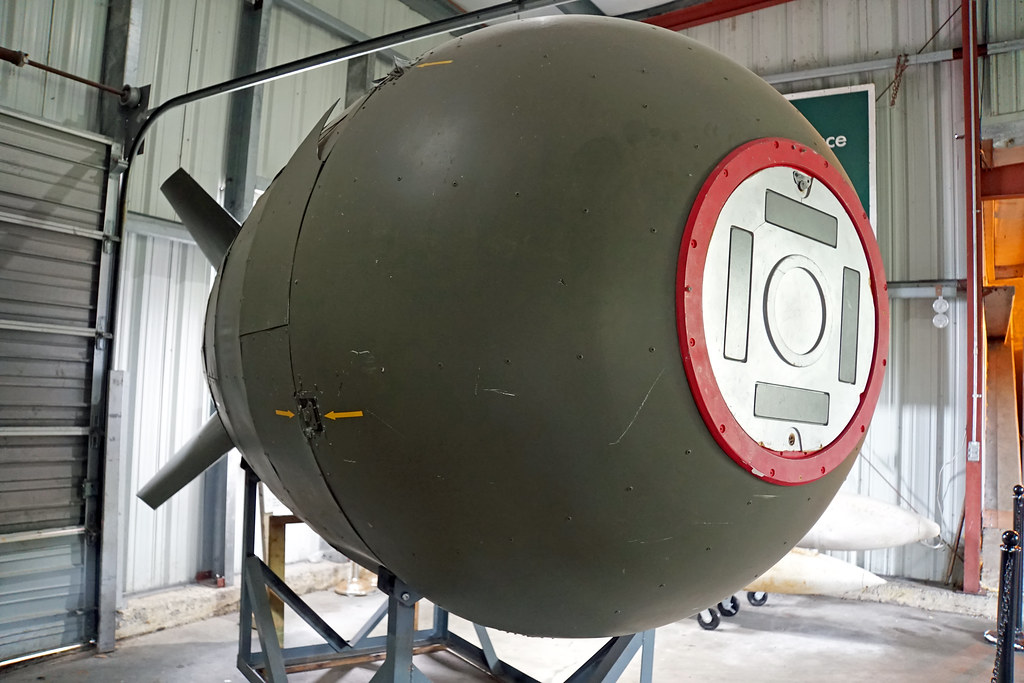
7. **Myth: The atomic bombings convinced Japan to surrender.**For decades, the conventional wisdom held that the atomic bombings of Hiroshima and Nagasaki were the decisive factor that compelled Japan to surrender, thereby bringing World War II to a swift end and saving countless lives. This narrative emphasizes the unique terror of nuclear weapons as the ultimate deterrent, forcing an otherwise unyielding imperial power to finally capitulate. It’s a powerful and widely accepted explanation that has shaped public understanding of the war’s conclusion.
However, a more comprehensive look at the historical context suggests that the atomic bombs, while certainly a factor, were not the sole or even primary reason for Japan’s decision to surrender. Before the atomic bombs were dropped, the U.S. had already firebombed 66 Japanese cities, causing immense destruction and loss of life. As Tokyo’s Temple University director of Asian Studies, Jeffery Kingston, noted, “If you look at it from the perspective of the Japanese military, it doesn’t really make a big difference whether people are dying from fire bombing or atomic bombs… it is [just] two additional city centres that are destroyed.” The Japanese military leadership had already demonstrated a willingness to endure catastrophic conventional bombing.
What many people don’t realize is that on the very same day the U.S. dropped the second atomic bomb on Nagasaki, August 9, 1945, the Soviet Union invaded Japanese territory, launching a massive offensive into Manchuria. This sudden entry of the Soviet Union into the Pacific War fundamentally altered Japan’s strategic calculus. Japan had previously maintained a neutrality agreement with the Soviets, hoping they might broker friendly armistice terms between Japan and the U.S. With that option gone, and facing a war on a second front against millions more Soviet soldiers, Japan’s fate was sealed. The prospect of Soviet occupation, more than the atomic bombs alone, drove the Japanese elite to accept the Potsdam Declaration, preferring American occupation as the lesser evil. Pictured, the atomic cloud rises over Nagasaki just after the bomb was dropped, a potent image, yet one that represents only one piece of a complex strategic puzzle that led to Japan’s surrender.
Military equipment: Debate over the atomic bombings of Hiroshima and Nagasaki
Categories: 1945 controversies, 1945 in military history, 20th-century controversies in the United States, All Wikipedia articles in need of updating, All accuracy disputes
Summary: Substantial debate exists over the ethical, legal, and military aspects of the atomic bombings of Hiroshima and Nagasaki on 6 August and 9 August 1945 respectively at the close of the Pacific War theater of World War II (1939–45), as well as their lasting impact on both the United States and the international community.
On 26 July 1945 at the Potsdam Conference, United States President Harry S. Truman, British Prime Minister Winston Churchill and President of China Chiang Kai-shek issued the Potsdam Declaration which outlined the terms of surrender for the Empire of Japan. This ultimatum stated if Japan did not surrender, it would face “prompt and utter destruction”. Some debaters focus on the presidential decision-making process, and others on whether or not the bombings were the proximate cause of Japanese surrender.
Over the course of time, different arguments have gained and lost support as new evidence has become available and as studies have been completed. A primary focus has been on whether the bombing should be categorized as a war crime and/or as a crime against humanity. There is also the debate on the role of the bombings in Japan’s surrender and the U.S.’s justification for them based upon the premise that the bombings precipitated the surrender. This remains the subject of both scholarly and popular debate, with revisionist historians advancing a variety of arguments. In 2005, in an overview of historiography about the matter, J. Samuel Walker wrote, “the controversy over the use of the bomb seems certain to continue”. Walker stated, “The fundamental issue that has divided scholars over a period of nearly four decades is whether the use of the bomb was necessary to achieve victory in the war in the Pacific on terms satisfactory to the United States.”
Supporters of the bombings generally assert that they caused the Japanese surrender, preventing massive casualties on both sides in the planned invasion of Japan: Kyūshū was to be invaded in November 1945 and Honshū four months later. It was thought Japan would not surrender unless there was an overwhelming demonstration of destructive capability. Those who oppose the bombings argue it was militarily unnecessary, inherently immoral, a war crime, or a form of state terrorism. Critics believe a naval blockade and conventional bombings would have forced Japan to surrender unconditionally. Some critics believe Japan was more motivated to surrender by the Soviet Union’s invasion of Manchuria, Sakhalin and Kuril Islands, which could have led to Soviet occupation of Hokkaido. From outside the United States,
debates have focused on questions about America’s national character and morality, as well as doubts concerning its ongoing diplomatic and military policies.
Get more information about: Debate over the atomic bombings of Hiroshima and Nagasaki
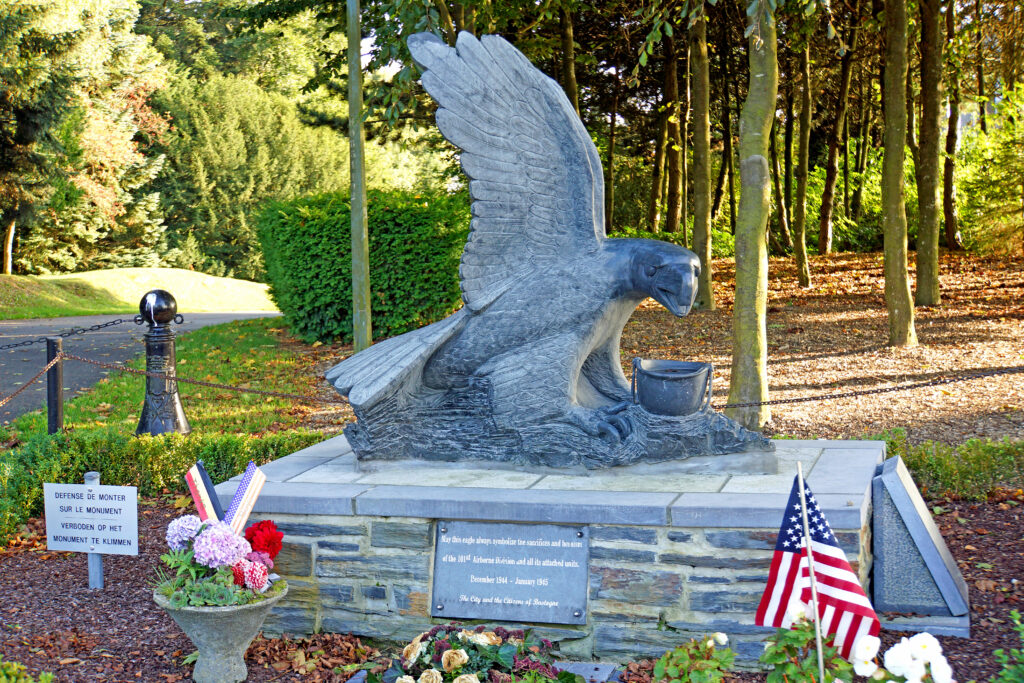
8. **Myth: The U.S. saved the day.**There is a deeply ingrained narrative, particularly within the United States, that American intervention single-handedly clinched victory in World War II. This belief often stems from a simplified understanding of the conflict, emphasizing specific moments of American heroism and sacrifice. It paints a picture of the U.S. arriving as the ultimate savior, turning the tide against seemingly insurmountable odds and bringing the war to a decisive conclusion through its sheer might and moral rectitude.
However, this notion largely overlooks the monumental contributions of other Allied powers, most notably the Soviet Union. As the Cold War commenced following World War II, a tendency emerged among Western Allies, including the U.S., to downplay the Soviet Union’s pivotal role, precisely because it was now an adversary. Yet, historical facts undeniably demonstrate that the Soviet Union bore the brunt of the fighting against Nazi Germany on the Eastern Front, making the most significant military contribution to its defeat.
The scale of this Eastern Front struggle was truly staggering. The ratio of total military losses on the Eastern Front compared to the Western Front was an astonishing nine to one, with over 80 percent of Germany’s military deaths occurring in the east. This immense pressure on Germany’s war machine, sustained over years, was a primary driver of the Nazi regime’s eventual collapse. While the U.S. certainly played a vital role, especially in the Western European and Pacific theaters, it was the relentless Soviet push from the east that bled the Wehrmacht dry.
Such extraordinary efforts naturally came at a harrowing cost. The Soviet Union suffered an estimated 10 million military personnel deaths, in addition to approximately 13 million civilian casualties. In stark contrast, the U.S. lost around 400,000 troops. The Battle of Stalingrad, where Soviet soldiers bravely charged amidst the brutal winter of 1942-43, stands as a testament to their sacrifice. This battle, costing Germany 70,000 lives and 91,000 prisoners, is widely recognized by historians as perhaps the major turning point of the war in favor of the Allies, underscoring the indispensable role of the Soviet Union in securing victory.
Military equipment: The Myth (film)
Name: The Myth
Caption: Film poster
NativeName: Infobox Chinese
Child: true
T: 神話
S: 神话
P: Shénhuà
J: San4-waa2
Director: Stanley Tong
Producer: Jackie Chan
Writer: Stanley Tong
Starring: Tony Leung Ka-fai,Kim Hee-sun,Mallika Sherawat
Music: Nathan Wang
Cinematography: Horace Wong,Ng Man-Ching,Michael Johnson,Lai Yiu-Fai,Choi Shung-Fai
Editing: Yau Chi-Wai
Studio: JCE Movies Limited
Distributor: Emperor Group
Released: [object Object]
Runtime: 118 minutes
Country: Hong Kong
Language: Cantonese,Mandarin Chinese,Korean,English,Tamil,Malayalam,
Budget: USD
Categories: 2000s Cantonese-language films, 2000s Hong Kong films, 2000s fantasy adventure films, 2005 films, 2005 martial arts films
Summary: The Myth (神話; 神话) is a 2005 martial arts fantasy film directed by Stanley Tong, who also wrote the film alongside Li Haishu and Wang Hui-ling, and produced by Jackie Chan. A Hong Kong-Chinese co-production, the film stars Chan with a supporting cast of Tony Leung Ka-fai, Kim Hee-sun, and Mallika Sherawat.
The Myth is followed by one sequel A Legend (2024).
Get more information about: The Myth (film)
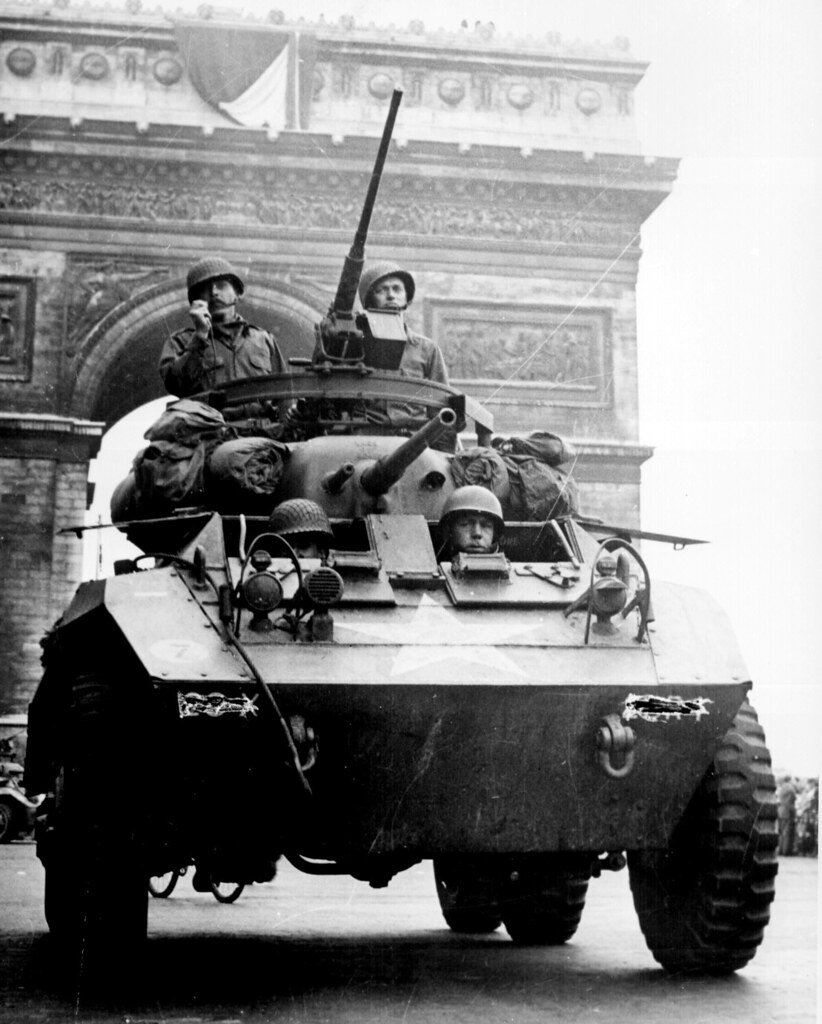
9. **Myth: American forces led D-Day.**The iconic imagery of D-Day, with American troops storming the beaches of Normandy, has led many to believe that the United States was the predominant force, both in leadership and resources, behind this pivotal invasion. The fact that the operation’s ultimate commander, Dwight D. Eisenhower, was American naturally reinforces this perception. It’s easy to assume that American ingenuity and military might were the primary drivers of what became the largest seaborne invasion in history, cementing a popular, albeit incomplete, view of the Allied effort.
However, a closer look at the logistical and command structures reveals a far more collaborative, and significantly British-led, endeavor. While Eisenhower held the top command, many of D-Day’s crucial architectural and operational roles were filled by British personnel. The operation’s architect, its service chiefs, the air commander, and the naval commander were all British. This division of leadership highlights the deep integration and shared responsibility across the Allied command structure, moving beyond a purely American-centric view.
Furthermore, the physical resources deployed for D-Day underscore the immense British contribution. In terms of naval assets, Britain’s warships and landing craft outnumbered America’s more than four to one. The skies above Normandy were also predominantly patrolled by British aircraft, which accounted for two-thirds of the total airpower deployed during the invasion. Even for the American troops on the ground, a substantial portion of their operational support, with one-third of their supplies, originated from Britain. These details paint a picture of D-Day as a truly multinational effort, with Britain providing a substantial and often underestimated share of the leadership and materiel necessary for its success.
Military equipment: Normandy landings
Conflict: Normandy landings
Partof: Operation Overlord
Caption: Into the Jaws of Death
Date: [object Object]
Place: Normandy,Vichy France
Coordinates: Coord
Territory: Five Allied beachheads established in Normandy
Result: Allied victory
Combatant1: Allies of World War II
Combatant2: flagcountry
Commander1: Supreme Headquarters Allied Expeditionary Force,{{flagicon,United States,Dwight D. Eisenhower
Commander2: Commander-in-Chief:,{{flagicon,Gerd von Rundstedt
Units1: [object Object],First Army (United States)
Units2: collapsible list,5th Panzer Army
Strength1: 156,000 soldiers,195,700 naval personnel
Strength2: 50,350+,170 coastal artillery guns
Casualties1: M4 Sherman
Casualties2: 4,000–9,000 killed, wounded, missing, or captured
Campaignbox: Campaignbox Normandy
Categories: 1944 in France, All Wikipedia articles written in British English, Amphibious operations involving Canada, Amphibious operations involving the United Kingdom, Amphibious operations involving the United States
Summary: The Normandy landings were the landing operations and associated airborne operations on 6 June 1944 of the Allied invasion of Normandy in Operation Overlord during the Second World War. Codenamed Operation Neptune and often referred to as D-Day (after the military term), it is the largest seaborne invasion in history. The operation began the liberation of France, and the rest of Western Europe, and laid the foundations for the Allied victory on the Western Front.
Planning for the operation began in 1943. In the months leading up to the invasion, the Allies conducted a substantial military deception, codenamed Operation Bodyguard, to mislead the Germans as to the date and location of the main Allied landings. The weather on the day selected for D-Day was not ideal, and the operation had to be delayed 24 hours; a further postponement would have meant a delay of at least two weeks, as the planners had requirements for the phase of the moon, the tides, and time of day, that meant only a few days each month were deemed suitable. German leader Adolf Hitler placed Field Marshal Erwin Rommel in command of German forces and developing fortifications along the Atlantic Wall in anticipation of an invasion. US president Franklin D. Roosevelt placed Major General Dwight D. Eisenhower in command of Allied forces.
The invasion began shortly after midnight on the morning of 6 June with extensive aerial and naval bombardment as well as an airborne assault—the landing of 24,000 American, British, and Canadian airborne troops. The early morning aerial assault was soon followed by Allied amphibious landings on the coast of France c. 06:30. The target 80-kilometre (50 mi) stretch of the Normandy coast was divided into five sectors: Utah, Omaha, Gold, Juno, and Sword. Strong winds blew the landing craft east of their intended positions, particularly at Utah and Omaha.
The men landed under heavy fire from gun emplacements overlooking the beaches, and the shore was mined and covered with obstacles such as wooden stakes, metal tripods, and barbed wire, making the work of the beach-clearing teams difficult and dangerous. The highest number of casualties was at Omaha, with its high cliffs. At Gold, Juno, and Sword, several fortified towns were cleared in house-to-house fighting, and two major gun emplacements at Gold were disabled using specialised tanks.
The Allies were able to establish beachheads at each of the five landing sites on the first day, but Carentan, Saint-Lô, and Bayeux remained in German hands. Caen, a major objective, was not captured until 21 July. Only two of the beaches (Juno and Gold) were linked on the first day, and all five beachheads were not connected until 12 June. German casualties on D-Day have been estimated at 4,000 to 9,000 men. Allied casualties were at least 10,000, with 4,414 confirmed dead.
Get more information about: Normandy landings
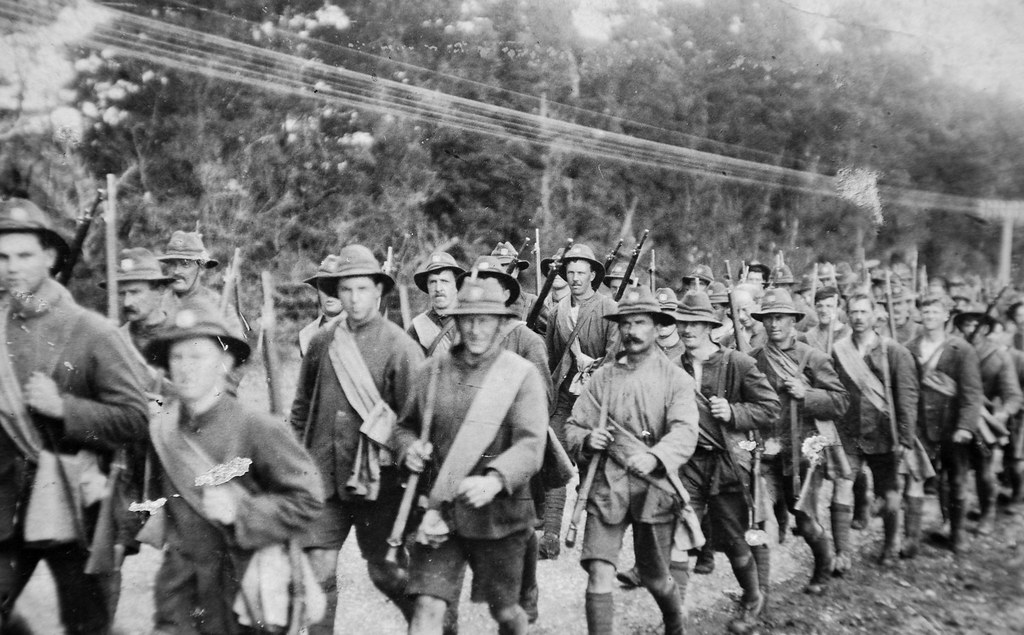
10. **Myth: It was one big war.**The conventional understanding of World War II often simplifies it into a singular, unified global struggle, frequently framed as ‘the world against the Nazis.’ This streamlined narrative presents a clear-cut conflict with easily identifiable protagonists and antagonists, suggesting that all nations were fighting the same war for the same reasons. It offers a tidy, manageable historical package, yet it considerably oversimplifies the intricate realities of the period.
In truth, World War II was a far more complex and multifaceted phenomenon. It was not a single, monolithic conflict but rather a diverse collection of both related and sometimes entirely unrelated geopolitical struggles that had been brewing for years, if not decades. These tensions, arising from various regional ambitions, ideological clashes, and unresolved historical grievances, collectively reached a critical mass, triggering widespread hostilities across the globe.
Examples of these interwoven conflicts are numerous and highlight the diverse origins of the war. Japan’s aggressive incursions into China, Italy’s colonial ambitions in Africa, border disputes between the Soviet Union and Japan, and ideological battles between communists and anti-communists in Eastern Europe were all distinct yet converging elements. These individual flashpoints contributed to the overall conflagration, demonstrating that the ‘one big war’ narrative barely scratches the surface of the myriad localized and regional conflicts that ultimately formed the tapestry of World War II.
Military equipment: Black Myth: Wukong
Title: Black Myth: Wukong
Developer: Game Science
Publisher: Game Science
Series: Black Myth
Engine: Unreal Engine 5
Platforms: PlayStation 5,Windows,Xbox Series X/S
Released: PlayStation 5, Windows,August 20, 2024,Xbox Series X/S,August 20, 2025
Director: Feng JiHair space
Producer: Feng JiHair space
Designer: Jiang BaicunHair space
Programmer: Zhao WenyongHair space
Artist: Yang QiHair space
Composer: 8082 Audio
Genre: Action role-playing game
Modes: Single-player video game
Categories: 2024 video games, Action role-playing video games, All Wikipedia articles written in American English, Articles containing simplified Chinese-language text, Articles containing traditional Chinese-language text
Summary: Black Myth: Wukong is a 2024 action role-playing game developed and published by Game Science. The player assumes the role of the Destined One, a staff-wielding monkey, who embarks on a journey to recover six relics corresponding to Sun Wukong’s six senses. The game is inspired by the classical Chinese novel Journey to the West. It is the first installment in the Black Myth series.
Black Myth: Wukong was released for PlayStation 5 and Windows on August 20, 2024. It was released for Xbox Series X/S on August 20, 2025. It received generally favorable reviews from critics and won several accolades including Game of the Year awards. It sold 20 million units in its first month, making it one of the fastest-selling games of all time. Black Myth: Zhong Kui is the next entry in the series.
Get more information about: Black Myth: Wukong
Read more about: Beyond Swords and Sorcery: 15 Medieval Movie Blunders That Hollywood Keeps Getting Wrong About Knights, Castles, and Culture
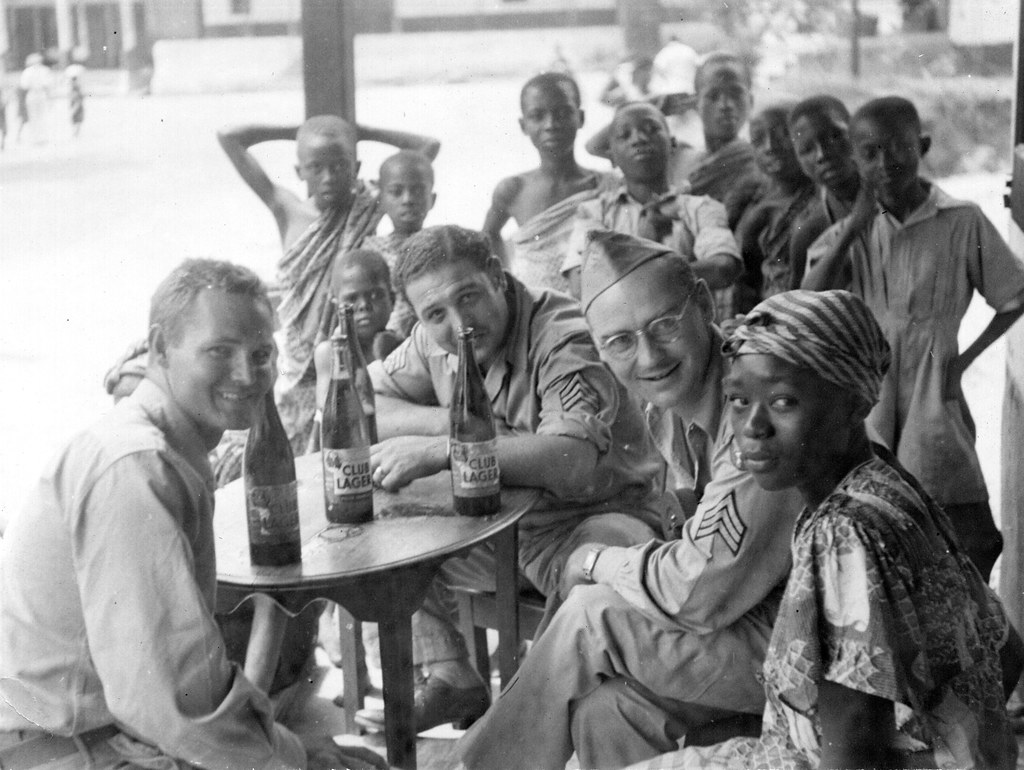
11. **Myth: It wasn’t really a ‘world’ war.**Many casual observers might perceive World War II as primarily a European conflict, perhaps extending to the Pacific theater, involving a handful of major powers like the U.S., the Soviet Union, Great Britain, France, Germany, Japan, and Italy. This perspective, while acknowledging the primary combatants, often minimizes the truly global reach and participation that characterized the conflict, failing to capture the immense breadth of its impact and engagement across continents.
However, to label it anything less than a genuine “world” war would be a severe mischaracterization. While the core combatants, in terms of sheer numbers of deployed troops, were indeed concentrated among the aforementioned nations, the war eventually drew in nearly every country on the planet. Official declarations of war were issued by virtually the entire world, leaving only a tiny handful of countries maintaining neutrality, a testament to the conflict’s pervasive and inescapable nature.
The global involvement stretched far beyond Europe and the Pacific, encompassing diverse geographical regions and military engagements. From intense naval actions off the coast of South America, such as the sinking of the German battleship Admiral Graf Spee near Montevideo, Uruguay, to critical battles over oil fields in the Middle East, and significant land operations across North Africa, the war’s tendrils reached every corner. Reinforcements arrived from as far as New Zealand, demonstrating that no continent, no ocean, and indeed no corner of the globe was truly exempt from the ravages and demands of this unparalleled global conflict.
Military equipment: Myth of the spat-on Vietnam veteran
Categories: All articles covered by WikiProject Wikify, All articles needing rewrite, All articles with style issues, All pages needing cleanup, American military personnel of the Vietnam War
Summary: There is a persistent myth or misconception that many Vietnam War veterans were spat on and vilified by antiwar protesters during the late 1960s and early 1970s. These stories, which overwhelmingly surfaced many years after the war, usually involve an antiwar female spitting on a veteran, often yelling “baby killer”. Most occur in U.S. civilian airports, usually San Francisco International, as GIs returned from the war zone in their uniforms.
No unambiguous documented incident of this behavior has ever surfaced, despite repeated and concerted efforts to uncover them. The few dubious examples brought forward have been the object of much debate and controversy. Only 1 percent of Vietnam veterans themselves, according to a Veterans Administration-commissioned Harris Poll conducted in 1971, described their reception from friends and family as “not at all friendly”, and only 3 percent described their reception from people their own age as “unfriendly”. More, there is ample and well documented evidence of a mutually supportive, empathetic relationship between GIs, veterans and antiwar forces during the Vietnam War. Martin Luther King Jr. spoke to this in his April 1967 speech, “Beyond Vietnam: A Time to Break Silence”, when he chastised “those who are seeking to make it appear that anyone who opposes the war in Vietnam is a fool or a traitor or an enemy of our soldiers”.
Get more information about: Myth of the spat-on Vietnam veteran
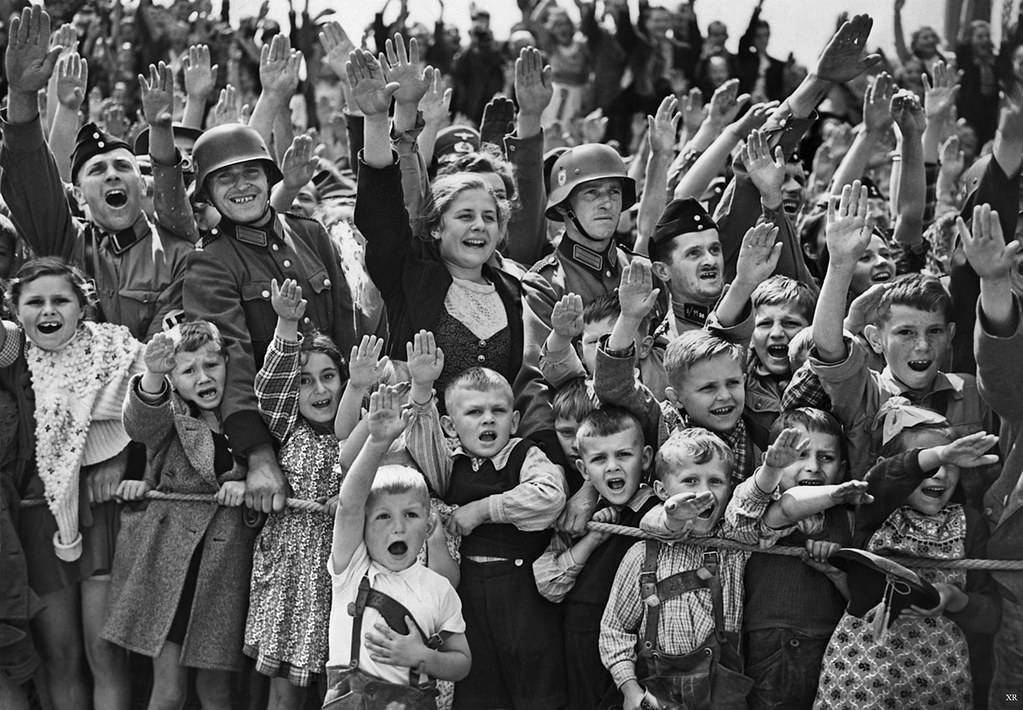
12. **Myth: It started in 1939.**The prevailing historical narrative, etched into most textbooks, marks September 1, 1939, with Nazi Germany’s invasion of Poland, as the definitive beginning of World War II. For some in the United States, the war’s commencement might even be pinpointed to December 7, 1941, the day of the attack on Pearl Harbor. These dates offer convenient, clear starting points that align with major Western involvement, making the vast historical tapestry seem more structured and comprehensible.
However, a deeper dive into the geopolitical events preceding 1939 reveals a more complex and drawn-out genesis for the global conflict. Many historians propose earlier starting points, recognizing that the seeds of World War II were sown long before the invasion of Poland. These include significant events such as the Soviet-Japanese border fighting in Mongolia in May 1939, the full-scale outbreak of the Second Sino-Japanese War in 1937, Italy’s invasion of Abyssinia in 1935, and even Japan’s initial invasion of Manchuria in 1931.
This discrepancy in perceived starting dates often boils down to a fundamental principle of historical record-keeping: the victors write the history. The powerful nations on the winning side of World War II ultimately defined the war’s beginning as the moment their interests became undeniably entwined with the unfolding global crisis. This framing emphasizes their entry as the critical turning point, rather than acknowledging the earlier, localized conflicts that were already contributing to the worldwide conflagration, thereby shaping a narrative that prioritizes their own involvement.
Military equipment: Masada myth
Categories: Articles with short description, Heroes in mythology and legend, Historical myths, Historiography of Israel, Short description matches Wikidata
Summary: The Masada myth is the early Zionist retelling of the Siege of Masada, and an Israeli national myth. The Masada myth is a selectively constructed narrative, with the Zealot defenders of Masada depicted as national heroes in the First Jewish–Roman War who killed themselves rather than surrendering to the Roman army. Josephus, the only written source for the event – albeit one considered strongly biased – had the Sicarii as the defenders of Masada using words to describe them that have been translated as “bandits”, “terrorists” and “murderers”, and recorded them killing their fellow Jews rather than fighting Romans. Josephus does describe a mass suicide though many modern scholars consider this doubtful.
The modern myth version first emerged and was promoted in Mandatory Palestine and later Israel. Despite the modern academic consensus, popular accounts by figures like Yigal Yadin and Moshe Pearlman have perpetuated the myth, influencing public perception. In the myth narrative, the defenders of Masada were depicted as national symbols of heroism, freedom, and national dignity. This narrative selectively emphasized Josephus’s account, highlighting the defenders’ courage and resistance while omitting the details of their murderous campaign against innocent Jews, as well as certain elements of their final mass suicide. The early Zionist settlers wished to reconnect with ancient Jewish history, and thus used the Masada myth narrative to establish a sense of national heroism and to promote patriotism. In the aftermath of the Holocaust, the story’s themes of resilience and isolation resonated with and circulated in Israeli public discourse, youth movements, and film media.
The widespread embrace of the Masada myth in Israel started waning in the late twentieth century. Israelis advocating for compromise in the Israeli–Palestinian peace process associated Masada’s symbolism as an uncompromising last stand with right-wing nationalism, and the story became less prominent as a broad national symbol.
The Masada myth’s central role in Israeli collective memory has puzzled scholars due to its structural differences from other national myths: Josephus’s account was not an origin myth, did not provide formative context, and was not heroic in nature. It has been described as “an extreme example of the construction of national memory”, as it had no prior basis in Jewish collective memory.
Get more information about: Masada myth
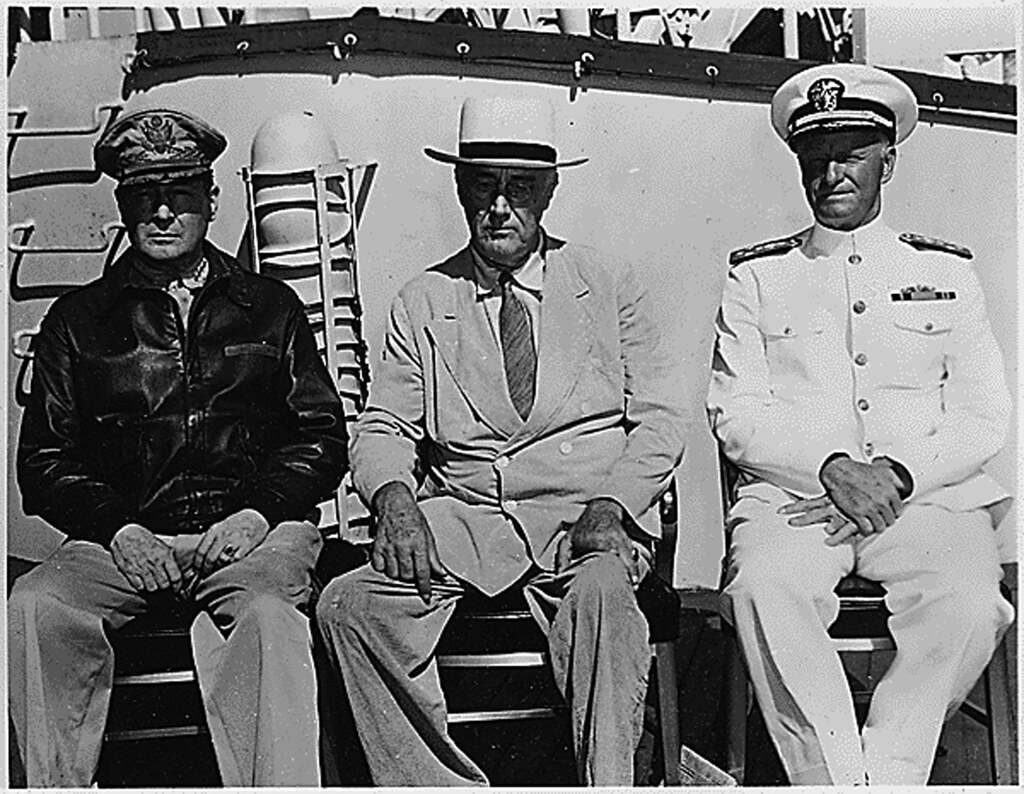
13. **Myth: Pearl Harbor was a surprise sneak attack.**The bombing of Pearl Harbor on December 7, 1941, is widely remembered as a quintessential “surprise sneak attack,” a sudden and unprovoked act of aggression by Japan against an unsuspecting United States. This narrative underscores the shock and outrage felt by the American public, framing the event as a monumental betrayal that galvanized the nation into war. The imagery of unsuspecting sailors and an unprepared fleet contributes to the dramatic impact of this historical perception.
While it is true that Japan launched the attack without a formal declaration of war, thereby making it a “sneak” attack in the diplomatic sense, to characterize it as a complete “surprise” from a strategic standpoint is a misrepresentation. Tensions between the U.S. and Japan had been escalating dramatically for well over a decade. The U.S. had, in fact, developed an official war plan for potential action against Japan as early as 1924, indicating a long-standing awareness of potential conflict.
Further evidence of brewing conflict surfaced when the Japanese bombed an American ship in China thirteen years prior to Pearl Harbor. By 1941, as negotiations between the two nations frayed, the imminent threat of war was palpable, even beyond the highest echelons of government. A Gallup poll conducted in 1941, before the attack, revealed that a significant 52 percent of Americans already expected war with Japan, while only 27 percent did not. This widespread anticipation suggests that while the specific timing and location of the strike might have been a surprise, the general inevitability of conflict was far from unexpected.
Military equipment: Attack on Pearl Harbor
Conflict: Attack on Pearl Harbor
Partof: Asiatic-Pacific Theater
Caption: Battleship Row
Date: [object Object]
Place: Oahu,Territory of Hawaii
Coordinates: Coord
Result: United States declaration of war on Japan
MapType: Hawaii#Pacific Ocean
MapSize: 200
Combatant1: United States|1912
Combatant2: flagcountry
Commander1: indented plainlist
Commander2: indented plainlist
Units1: indented plainlist
Units2: indented plainlist
Strength1: indented plainlist
Group: 390 aircraft
}}
Strength2: indented plainlist
Casualties1: indented plainlist
Casualties2: indented plainlist
Notes:
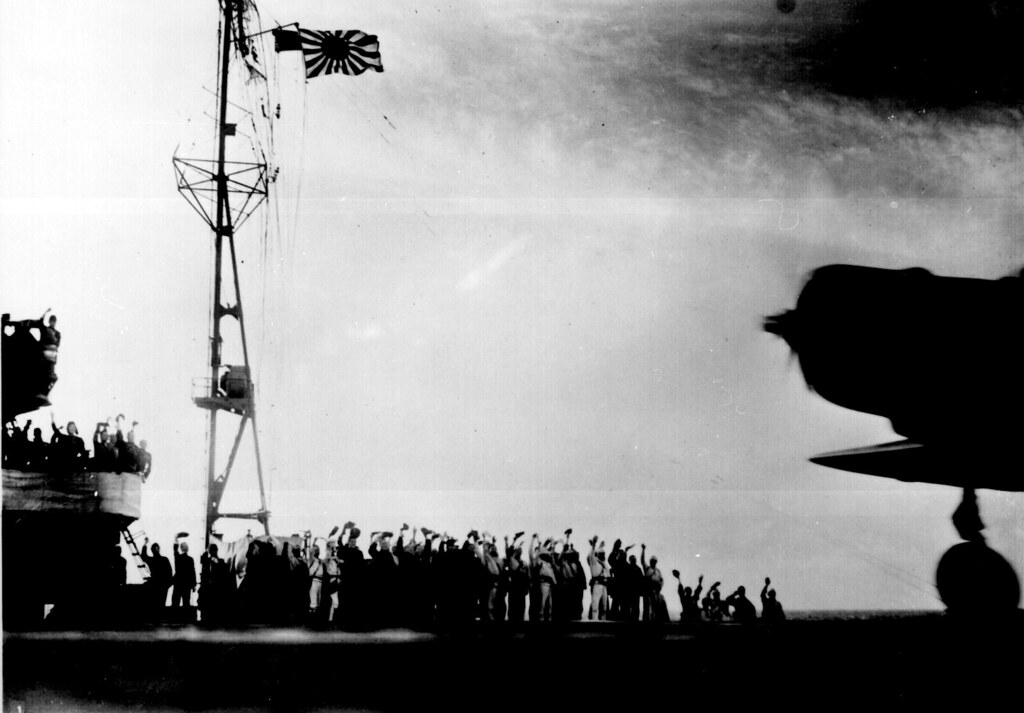
14. **Myth: The U.S. stayed out of the war until Pearl Harbor.**A common belief asserts that the United States maintained a strict isolationist stance, remaining entirely detached from the burgeoning global conflict until the direct attack on Pearl Harbor in December 1941. This narrative often positions the U.S. as a reluctant entrant into the war, forced into action only when its own territory was directly threatened. It suggests a nation minding its own business, far removed from the geopolitical struggles across the Atlantic and Pacific, until directly provoked.
However, the reality of America’s involvement prior to Pearl Harbor was far more intricate than simple neutrality. While the U.S. had not declared war and had not deployed troops into combat before the attack, the nation was already deeply engaged in supporting the Allied cause through other significant means. This indirect involvement played a critical role in shaping the course of the war even before formal entry.
A prime example of this pre-Pearl Harbor engagement is the Lend-Lease program, enacted a full six months before the attack. This program allowed the U.S. to supply a massive amount of war materiel to Allied nations, providing the modern equivalent of $659 billion worth of supplies to countries actively fighting the Axis powers. Furthermore, it was America’s imposing economic sanctions against Japan in 1941 that directly precipitated the Japanese decision to attack Pearl Harbor in the first place, seeking to secure resources vital for their war effort. Thus, to suggest that the U.S. was a passive bystander before December 7, 1941, is simply inaccurate, as its actions profoundly influenced the global conflict.
Military equipment: Pearl Harbor (film)
Alt: A sky full of planes, below a woman standing at a washing line.
Caption: Theatrical release poster
Director: Michael Bay
Producer: Jerry Bruckheimer,Michael Bay
Writer: Randall Wallace
Starring: Ben Affleck,Josh Hartnett,Kate Beckinsale,Cuba Gooding Jr.,Tom Sizemore,Jon Voight,Colm Feore,Alec Baldwin
Music: Hans Zimmer
Cinematography: John Schwartzman
Editing: Chris Lebenzon,Mark Goldblatt,Steven Rosenblum,Roger Barton (film editor)
ProductionCompanies: Touchstone Pictures,Jerry Bruckheimer Films
Distributor: Walt Disney Studios Motion Pictures
Released: [object Object],[object Object]
Runtime: 183 minutes
Country: United States
Language: English,Japanese
Budget: $140 million
Gross: $449.2 million
Categories: 2000s American films, 2000s English-language films, 2000s Japanese-language films, 2000s war drama films, 2001 films
Summary: Pearl Harbor is a 2001 American epic romantic war drama film directed by Michael Bay, produced by Bay and Jerry Bruckheimer and written by Randall Wallace. Starring Ben Affleck, Josh Hartnett, Kate Beckinsale, Cuba Gooding Jr., Tom Sizemore, Jon Voight, Colm Feore, and Alec Baldwin, the film features a heavily fictionalized version of the attack on Pearl Harbor, focusing on a love triangle set amidst the lead up to the attack, its aftermath, and the Doolittle Raid.
The film was a box office success, grossing $59 million in its opening weekend and $449.2 million worldwide, becoming the sixth highest-grossing film of 2001. It received generally negative reviews from critics, although there was praise for the visual effects, action sequences, and music score. The film was nominated for four Academy Awards, winning in the category of Best Sound Editing. It was also nominated for six Golden Raspberry Awards, including Worst Picture.
Get more information about: Pearl Harbor (film)
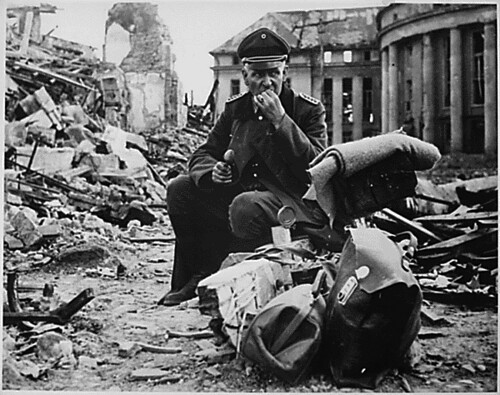
15. **Myth: The Nazis were duly punished for their crimes.**The Nuremberg Trials after World War II cemented a powerful image of justice being served, where the architects of Nazi atrocities were held accountable for their heinous crimes. This narrative provides a sense of moral closure, suggesting that the scale of the evil committed by the Nazis met with an equivalent measure of retribution, and that those responsible for the Holocaust and other war crimes ultimately faced the full weight of international law. It’s a comforting thought, a belief that justice prevailed.
However, a more unsettling truth has emerged over time, revealed by once-secret documents: a significant number of Nazis and their collaborators managed to evade justice. Astonishingly, as many as 9,000 individuals instrumental in orchestrating the Holocaust escaped prosecution. For perspective, only 6,495 Nazi war criminals ever stood trial. Many of these fugitives found safe haven, largely in South America, slipping away from accountability in the immediate aftermath of the war.
What makes this evasion even more disturbing is the complicity of various authorities. Many of those who escaped did so with direct governmental assistance from German, South American, and even French leaders, some of whom were themselves implicated in Nazi crimes. Furthermore, the post-war landscape saw a morally complex reality where thousands of Nazi scientists, despite their past allegiances, were recruited to play key roles in the nascent space race and weapons development programs for both the U.S. and the Soviet Union. This uncomfortable reality highlights a selective pursuit of justice, where strategic interests sometimes overshadowed the full reckoning for wartime atrocities, leaving a profound and enduring stain on the post-war pursuit of accountability.
As the living memory of World War II inevitably recedes, the responsibility to accurately preserve its history becomes ever more critical. The narrative of this conflict, so profoundly shaping our modern world, is frequently simplified into easily digestible soundbites: ‘Hitler rises, France falls, the Holocaust begins, Pearl Harbor burns, D-Day commences, the bomb drops.’ Yet, as we have seen, this condensed version often misrepresents the true chronology, progression, and ultimate conclusion of the war. It can obscure the immense devastation wrought by all sides and overshadow the quiet triumphs of forgotten heroes and nations.
Military equipment: Hanging
Categories: All Wikipedia articles written in British English, All articles lacking reliable references, All articles with incomplete citations, All articles with self-published sources, All articles with unsourced statements
Summary: Hanging is killing a person by suspending them from the neck with a noose or ligature. Hanging has been a standard method of capital punishment since the Middle Ages, and has been the primary execution method in numerous countries and regions. As a form of execution, it is commonly practiced at a structure called a gallows. The first known account of execution by hanging is in Homer’s Odyssey. Hanging is also a common method of suicide.
Get more information about: Hanging
Unraveling these long-held myths, from the true scale of civilian casualties and the often-overlooked contributions of the Soviet Union, to the complex origins of the conflict and the incomplete pursuit of justice, is not merely an academic exercise. It is a vital endeavor to grasp the war as it truly unfolded, free from the distorting lenses of national pride, propaganda, or convenient simplification. The truth of World War II, in all its complexity and horror, exists; it is only myths that need to be invented and propagated. By continually challenging these pervasive untruths, we ensure that the lessons of this pivotal global struggle are accurately understood, honoring the sacrifices made and informing our path forward.

